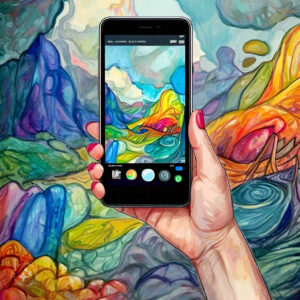
Need:
A group of designers, content designers, professional photographers and researchers working for a global search engine tech company was in the process of revamping their photo-editing app with a new product vision.
Their vision was to create an intuitive editing experience by “create an accessible, easy and personalized editor to help the casual photos user get professional-looking results effortlessly by using intuitive high level editing operations and a conversation-like flow to edit their photos and videos.”
This vision is guided by two main ideas:
- Casual photo editors will be able to edit their photos with a professional look by using their natural, most intuitive language, rather than with complex specialized words used only by specialized photo-editors.
- Prompts and suggestions that nudge the editing process will facilitate and enhance the experience of the casual photo editors.
To achieve this vision, research was conducted to gain a better understanding of the user’s expectations, behaviors, and natural usage of language while editing photos. Key questions guided the study:
- What are the general expectations of a photo editing app?
- How the expectations vary by editing needs (enhancing, personalizing, correcting)?
- How clear is the end-goal when starting the editing task?
- Are there any cultural biases that influence how an edited photo should look like?
- How and where do users get the inspiration and influence of how the end-editing job should look like?
- What does ‘intuitive editing’ mean for users?
- How do users think of suggested actions for editing?
- What functions or tasks in editing are users confused by?
- What are the language patterns (words and phrases mostly used and level of sophistication)?
- How does ‘intuitive editing’ vary across skill-level of users?
Solution:
I conducted 16 remote 1:1 interviews in 2 markets (US and India) with casual photo editors with a mix of editing skills and affinity to the photo editing app.
During the research sessions, participants were asked to edit a series of personal photos live, exploring how their editing needs varied depending on the purpose of using the app:
-
Enhancing: Participants were asked to enhance the quality of their photos by adjusting features such as brightness, contrast, and saturation.
-
Personalizing: Participants were asked to personalize their photos by adding filters, text, or other creative elements that reflected their personality or style.
-
Correcting: Participants were asked to correct any errors or imperfections in their photos, such as red-eye or blemishes.
Results:
Key Insights and Recommendations provided to the team:
1/ Multiple factors influence the natural intuitive language used by casual photo users, including photo editing skills, general education background, and more importantly culture.
Culture highly influences users expectations of how a final edited photo should look like, and as a result, the phrases and words (even when translated and localized) have different meanings and weight. For example: “Make it brighter” while enhancing a photo meant different things for users in India than in the United States.
2/ Less skilled photo editors welcomed nudges and guidance while editing photos, but more skilled casual photo editors wanted to get a feeling that the end result was their own creation and not generated by an app.
The main recommendation given to the team was to ensure that intuitive editing was adapted to cultural contexts to ensure that end results of featured matched local expectations. In addition, it was recommended to allow users to personalize the level of support throughout the editing process.

